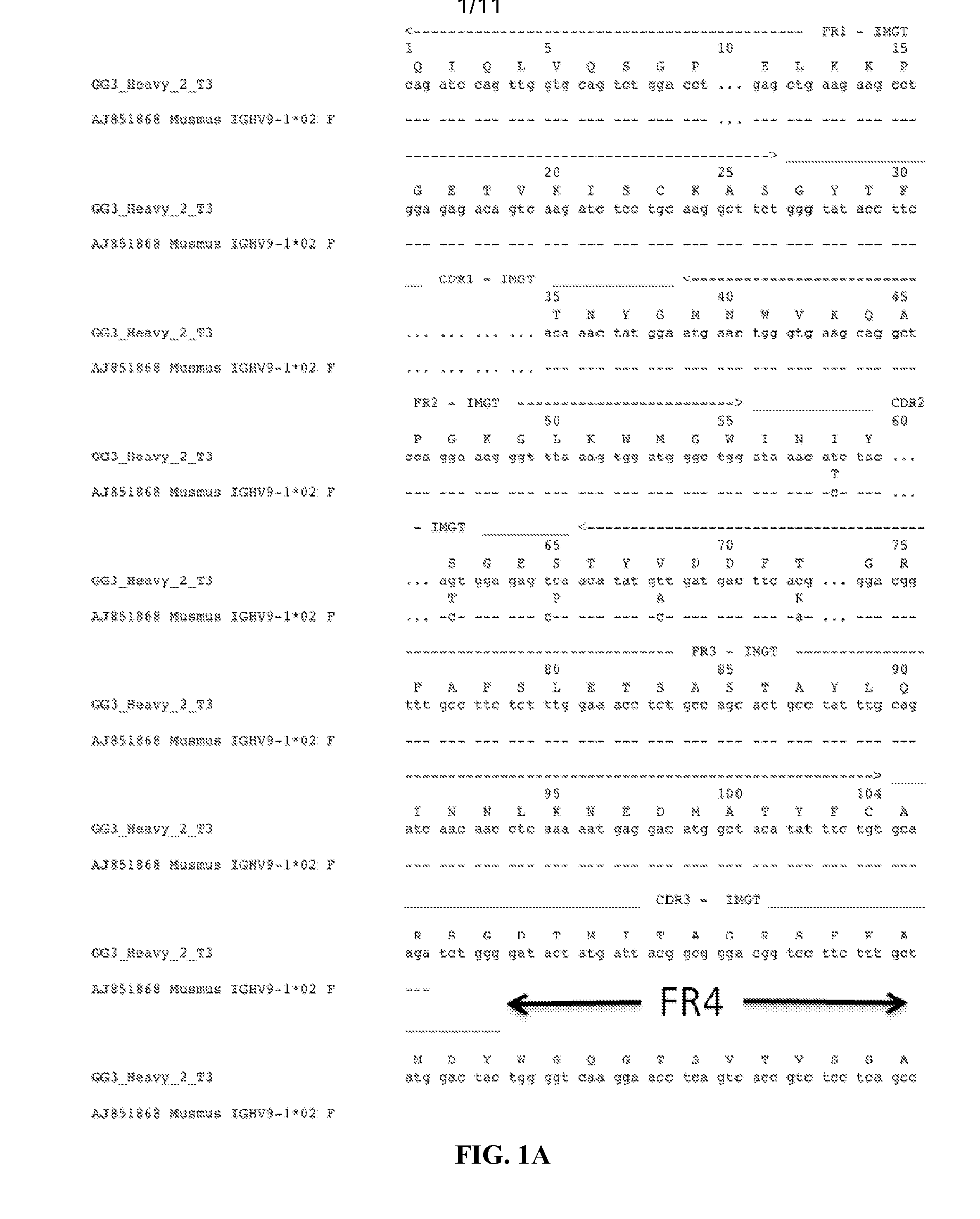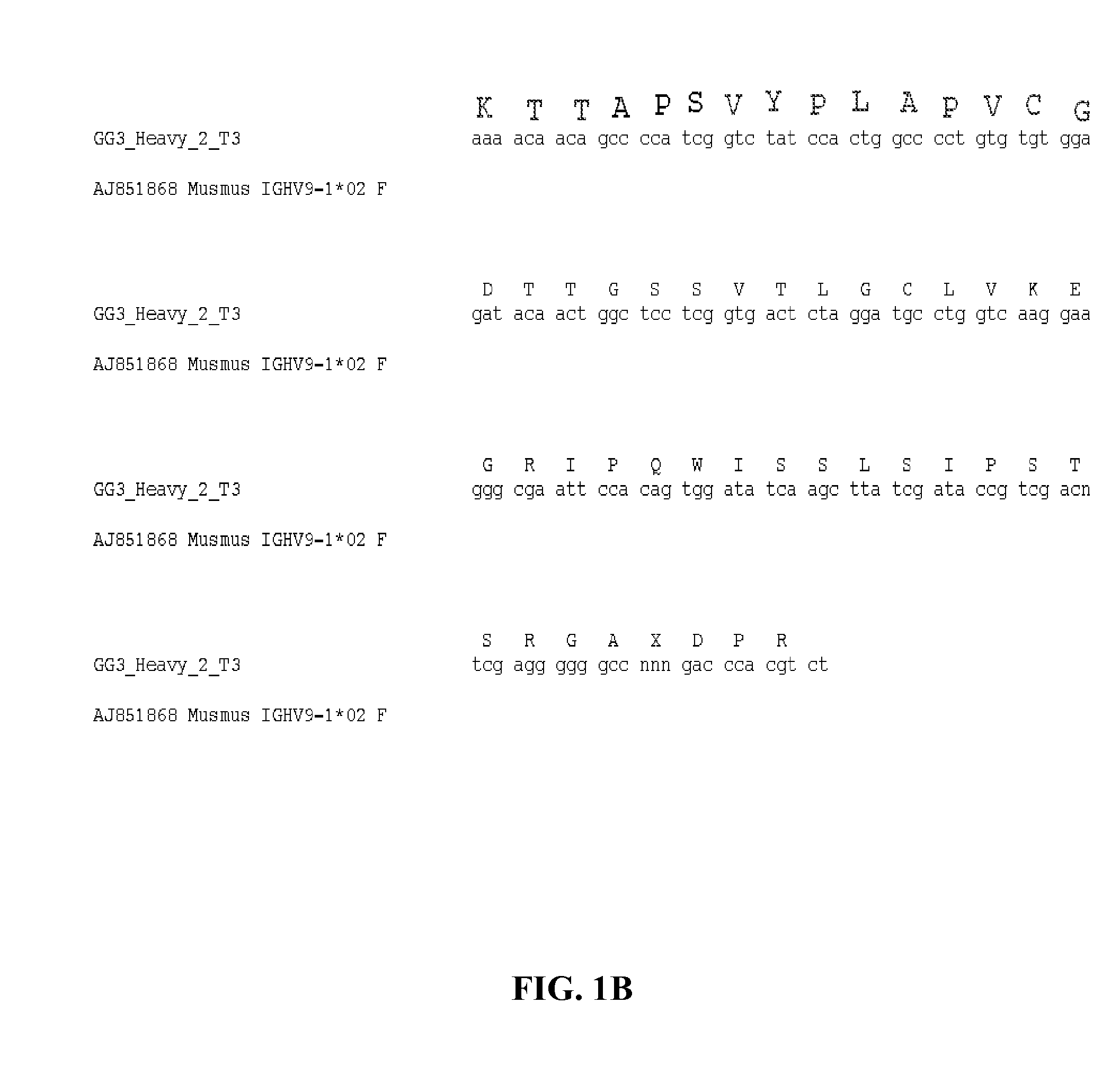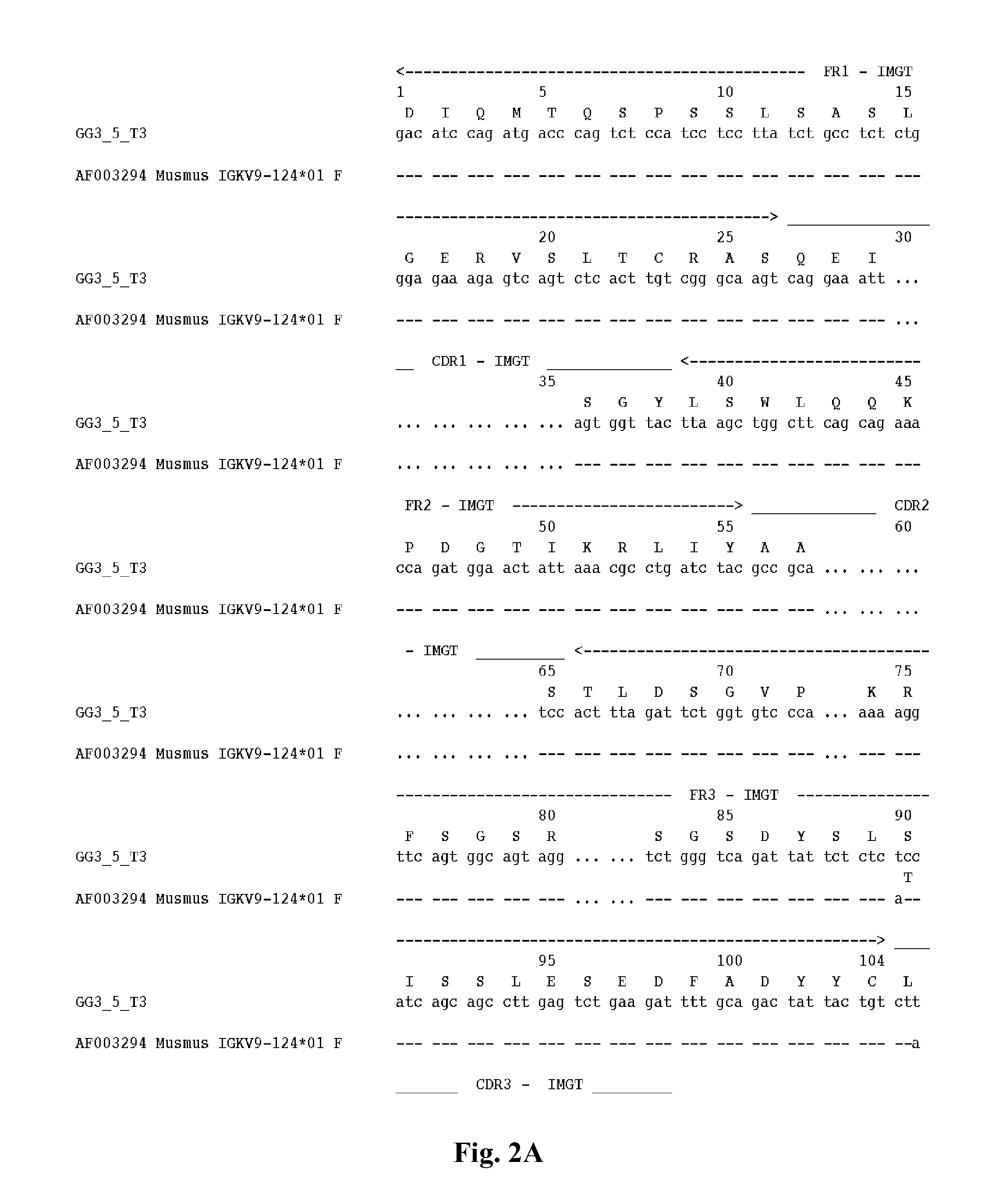Antibodies against influenza virus hemagglutinin and uses thereof
a technology of hemagglutinin and antigen, applied in the field of antigens against influenza virus hemagglutinin, can solve the problems of major pandemic, influenza viruses are the cause of infrequent pandemics, cumulative morbidity and mortality caused by seasonal influenza, etc., to prevent the progression, reduce the duration, and reduce the severity
- Summary
- Abstract
- Description
- Claims
- Application Information
AI Technical Summary
Benefits of technology
Problems solved by technology
Method used
Image
Examples
Embodiment Construction
5.1 Antibodies
[0073]Provided herein are antibodies that bind to an influenza virus hemagglutinin. In a specific embodiment, provided herein is an antibody that binds to the HA of a certain group, cluster or subtype of influenza virus, e.g., a Group 1 influenza virus, the H1 subtype of the influenza A virus, or the H5 subtype of the influenza A virus. In certain embodiments, an antibody described herein has a higher affinity for a certain group, cluster or subtype of influenza virus (e.g., a Group 1 influenza virus or the H1 subtype of the influenza A virus) than to another group or subtype of influenza virus. In specific embodiments, the affinity of an antibody described herein for a certain group, cluster or subtype of influenza virus (e.g., a Group 1 influenza virus, the H1 subtype of the influenza A virus, or the H5 subtype of the influenza A virus) is 1-fold, 1.5-fold, 2-fold, 3-fold, 4-fold, 5-fold, 6-fold, 7-fold, 8-fold, 9-fold, 10-fold, greater than 10-fold, 1- to 2-fold, 1-...
PUM
| Property | Measurement | Unit |
|---|---|---|
| dissociation constant | aaaaa | aaaaa |
| dissociation constant | aaaaa | aaaaa |
| dissociation constant | aaaaa | aaaaa |
Abstract
Description
Claims
Application Information
 Login to View More
Login to View More - R&D
- Intellectual Property
- Life Sciences
- Materials
- Tech Scout
- Unparalleled Data Quality
- Higher Quality Content
- 60% Fewer Hallucinations
Browse by: Latest US Patents, China's latest patents, Technical Efficacy Thesaurus, Application Domain, Technology Topic, Popular Technical Reports.
© 2025 PatSnap. All rights reserved.Legal|Privacy policy|Modern Slavery Act Transparency Statement|Sitemap|About US| Contact US: help@patsnap.com



